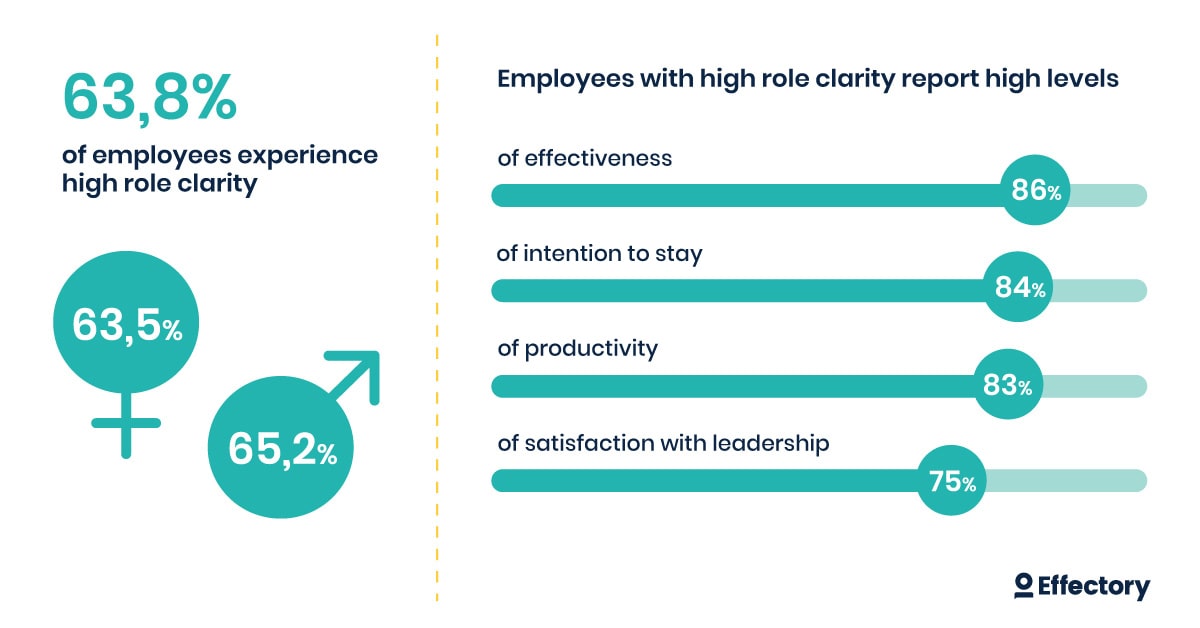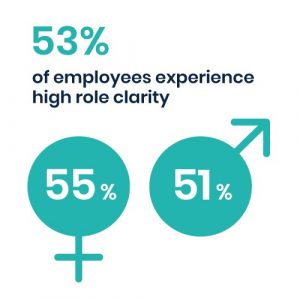Although knowing clearly what needs to be done and what is expected of you is essential for engagement, over 35% of employees say they experience a lack of clarity about roles at work.
Policy of vacillating hampers engagement

Knowing how to be as productive as possible as an organization is particularly important now that a large number of employees and managers are working from home. Role clarity is crucial in this respect. People working remotely need to know even more clearly what is expected of them and what they need to prioritize.
Clear goals
When responsibilities, work content and work processes are clear, employees experience role clarity. Not just about their own roles, but also about those of their colleagues. Clear goals for everyone are a prerequisite for being able to function properly. Employees then feel more responsible, are more motivated and perform better. And working toward greater clarity of roles also eliminates a potential stress factor.
Why are clear goals important for engagement?
If employee surveys show that the workload is too high, my first question is always whether employees actually know what is expected of them. Most of the time, it then turns out that employees do not have enough clarity about their role.
They may well have some kind of job description, but they are undecided about which organizational goal they should prioritize. Or they are confused because the goals seem to change continuously and that makes them uncertain. They want to do well, but they don’t know enough about what they are being assessed on.
As a result, they feel under more pressure at work. They then either shoot into overdrive, increasing the risk of burn-out, or they become less motivated or even leave completely.

Five causes of uncertainty about roles
Where does uncertainty about roles come from within organizations? There are five main causes: vacillating policymaking, sending out conflicting signals, inadequate coaching of new employees, insufficient attention to the personal development of managers and lack of feedback. On the latter: clarity around roles also means that employees should hear what they are doing well and what they aren’t. And preferably as soon as possible. People are much more comfortable getting instant feedback on their performance than once a year in the traditional annual review cycle.
HR Analytics: Role Clarity infographic & fact sheet
Get data-driven insights about role clarity in the workplace by downloading this infographic and fact sheet.
DownloadHow do you set goals that motivate?
Goals should preferably not be too abstract and achieving them must be feasible within a reasonable time. Employees must be able to get started immediately, otherwise they will think: “forget it”. You need these clear goals at every level; for example, the business goal can be to grow by 15%, while a team goal can be to increase customer satisfaction by one point.
There is then a real art to giving each employee a good idea of how they can contribute to the team goal and explaining how this contributes to achieving the organizational goals. Although you can do that in terms of output, sometimes choosing an input-driven goal is a better idea. Imagine that an in-house salesperson is required to bring in a ton of new orders quarterly by scheduling sales calls. That goal is probably not very motivating for them, as the success of those calls depends both on the salesperson making the call and on the actual customer.As a result, our in-house salesperson may be inclined to ignore that entire goal.
A better approach would be to say: “Make sure you schedule 50 sales calls this month.” That is at least a concrete and feasible goal that is definitely within their sphere of influence. And that is more likely to be motivating.
Engagement in your work
In a series of blogs, Guido Heezen, founder of Effectory, explains the conditions required to create an engaged workforce. Engagement is the extent to which employees revel in their work. Engaged employees learn quickly and are creative. Engagement is a good predictor for customer satisfaction, low employee turnover, high productivity and profitability.
Book a free demo. See our solutions in action.
Effectory is Europe’s Leading provider of Employee Listening Solutions. Schedule a product demo and discover how to enhance your employees’ engagement.
Demo request
